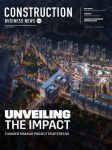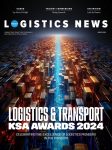Opinion: Small Business Logistics to Become Hyper-personalised
Nathalie Amiel-Ferrault, Vice President Customer Experience and Marketing at FedEx, on how Small Business Logistics will become hyper-personalised – transforming how the region’s entrepreneurs and small businesses grow, connect, and compete globally
The biggest trend in logistics right now is arguably not artificial intelligence, blockchain or even visibility. It’s personalisation – which is ushering in a new era of delivery, once only accessible to big global companies and corporations.
In the U.A.E, small and medium enterprises (SMEs) currently contribute to 53 per cent of the country’s gross domestic product (GDP). Personalisation offers new opportunities for SMEs to create a competitive advantage.
Already, the transport and logistics industry is at a threshold in terms of the use of personalisation – the ability to dynamically and uniquely tailor the shipping experience to any customer or individual. Yet while many micro-businesses believe in the power of personalisation on a product level, few are tapping into new customisation and personalisation strategies in logistics that can open further opportunities.
Small businesses in the region will be able deliver greater personalisation in the shipping experience and use logistics to gain ground against often older, larger or more established competitors. It is important to examine what’s changing, and what’s important when it comes to customisation and personalisation in a world where 11 per cent of global GDP is already directly attributable to digital technologies.
The first step is to change our mindset that logistics is something that happens after services and products are sold. For instance, logistics providers are able help SME e-tailers at the frontend to close more business on their website, or on the backend in after-sales service, matching shipping strategies with customer needs.
Innovation itself is also more mobile – it’s estimated that around 90 per cent of logistics today happens behind the mobile phone – meaning that we must deliver differently.
More than ever, consumers want more from their supply chain and logistics – the ability to return goods easily; to get a text message telling the purchaser their shipment is about to arrive; to track product requirements online; to vary the delivery window and location; even the ability to “click and collect” – collecting goods from a secure location like a staffed pick up point or local store. We’ve also seen growth in customisation and postponement which is giving SMEs more options to manage inventories more efficiently. By delaying product packaging and assembly for as long as possible, exact customer specifications can be met whenever products are needed.
But that’s just the start. Our industry is at a tipping point, barely scratching the surface of what’s possible as customers expect more, and demand more. In the future of logistics, it’s set to be ‘personalised everything’. Already, shipping is moving further away from a generic or one-size-fits-all approach to a highly personalised pattern of world commerce – with the ability to customise, flex, and individualise delivery in ways that are just only beginning to become clear.
This personalisation of connectivity – where we’ve moved from walking among 10,000 products in a store to accessing more than 10 million products on a connected device is giving today’s small businesses the opportunity to compete on customer experience on a scale never seen before.
As more consumers move online and use their smartphones to make their buying decisions, customer experience is expected to overtake price and product as the number one key brand differentiator. The opportunity for regional SMEs is Now.






















 Kuwaiti developer URC signs with Ahmadiah Contracting for the Commercial District development at Hessah AlMubarak
Kuwaiti developer URC signs with Ahmadiah Contracting for the Commercial District development at Hessah AlMubarak